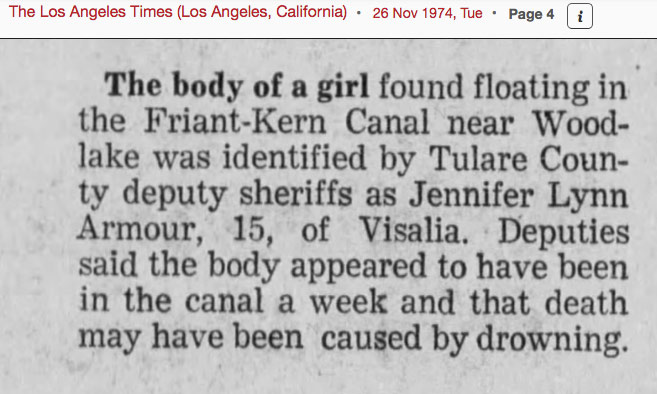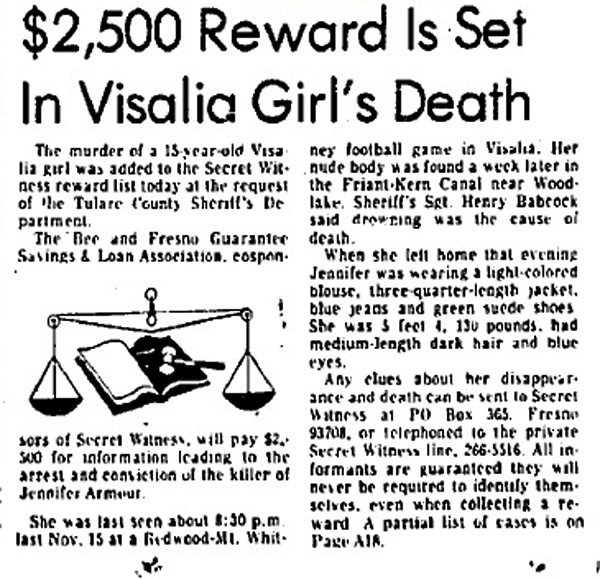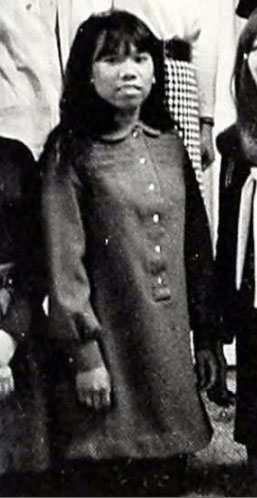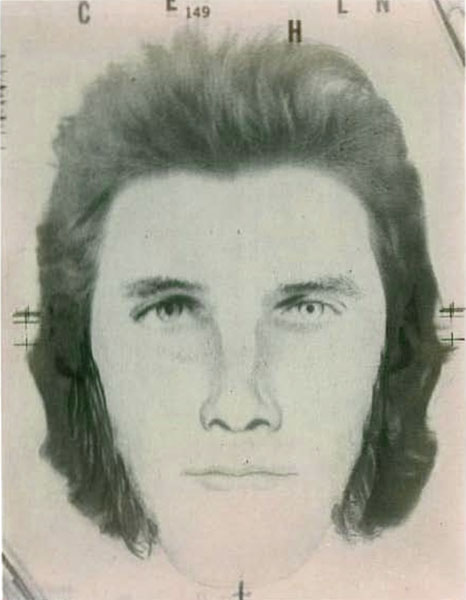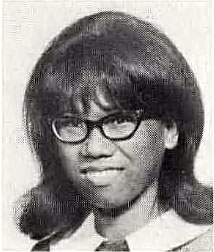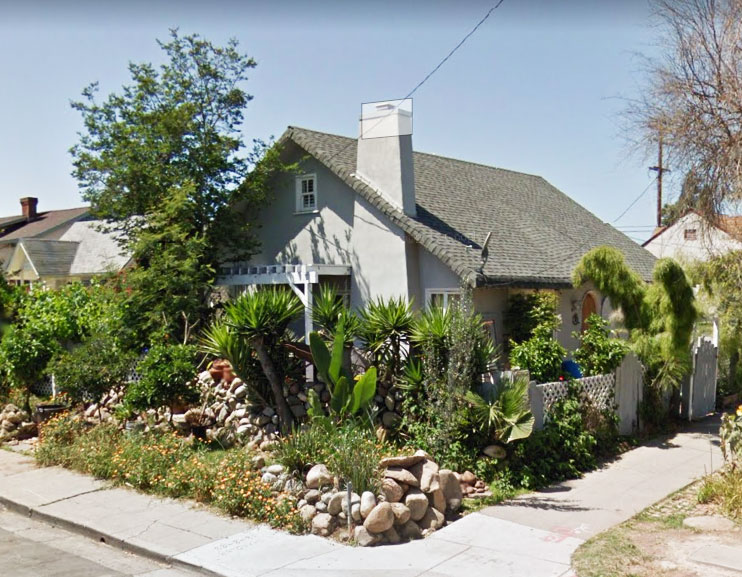For a twelve-day period in January 1984, the cities of Aurora and Lakewood Colorado were preyed upon by one of the most terrifying breeds of killers — a man who would attack strangers, rape the women and children, and bludgeon them to death.
For over thirty years, this killer has remained unidentified. But thanks to modern technology and the incredible talent and dedication of several individuals, it seems this case has finally been solved.
Read on to learn about the devastation and challenges faced in this crime series, the investigative leads that were undertaken, and the tremendous news that closure is within reach.
Attack 1
The crime spree known as the Colorado Hammer murders seemed to begin in Aurora in the early morning hours of January 4th, 1984.
James, a young man not even twenty-five years old yet, had married his wife Kim in August of 1982. They were living in Aurora and planned to make a life together there.
At approximately 2:00 AM on January 4th, 1984, an intruder came through an unlocked garage door. He attacked the couple with a hammer, bludgeoning them with it and leaving them for dead. Miraculously, both of them survived the assault, though James suffered from a fractured skull and his wife suffered a concussion.
There were very few leads to go on — only a hazy physical description from Kim.
The case lacked any apparent motive. The police found footprints in the snow that led up to and away from other homes in the same area and on the same street, leading them to believe that the offender was simply looking for an easy opportunity to lash out.
According to property records, the couple stayed in the same house after the attack. James and Kim divorced divorced in the fall of 1987.
James, who posts online from time to time, discusses how vividly the case still haunts him even to this day.
Attack 2
Almost six days later, tragedy struck Aurora once again.
It was Monday evening, January 9th, 1984. Darkness had just fallen. Twenty-eight-year-old Donna Dixon, fresh off a shift working as a flight attendant, had been out running some errands. She was happy to be home for a while, and eagerly awaiting the next day when her boyfriend, Ronald Holm, would be home. Ronald worked as a pilot.
Donna pulled into the driveway, hit the remote to open the garage, and pulled her car in. Before exiting the vehicle, she turned to grab her flight attendant uniform, which was hanging in the back. As she turned to leave the car, she felt a tremendous blow on the left side of her head. The force of the impact threw her head into the steering wheel. The world turned a painful red and Donna began to lose consciousness. She slumped over onto the passenger seat.
Even to this day, she has absolutely no recollection of the next several hours. It’s quite possible that she wasn’t even conscious for any of it. Investigators were able to piece together the details of the horrendous ordeal through study of the evidence and the crime scene.
The blow she’d felt was the attacker striking her head with a hammer. He tossed it onto the seat of the car and began pulling her from the vehicle. He tore her clothes off, tossed them about the garage, and then he raped her on the concrete floor.
The next thing Donna remembered was waking up naked in the garage. She had no idea how she got there and she didn’t feel any pain. She was numb and cold, and somehow was able to get to her feet and go inside the house. She made her way to the bedroom and went to bed. It would be nearly twenty-four hours total before she was found.
At around 8:00 PM on January 10th, 1984, her boyfriend Ron Holm arrived home. He was immediately alarmed at the scene in the garage — her clothes, purse, and even some of the mail was by her car. Blood near the front door sent him into a panic.
He raced inside and quickly found Donna in the middle of the blood-soaked bed. She was naked, curled up in a fetal position and groaning. He shouted her name, but she could only groan in response. He noticed a gaping wound on the left side of her skull.
Ron quickly called 911.
Donna was rushed to the hospital while police worked the scene. The large hammer was recovered, still on the seat of the car where the attacker had left it. It was dusted for prints, but none were found.
Blood was all over the garage floor. There was blood all over the car. Her clothes were tossed everywhere. Her purse was found nearby — some money had been stolen from it. Nothing else appeared to be missing.
Donna underwent several operations. Despite the trauma of the attack and losing an incredible amount of blood, the doctors and nurses were able to save her life. Amazingly, it was thought that spending so many hours naked on the garage floor in the freezing temperatures may have kept her from bleeding to death.
Ron kept vigil — and kept guard — in her hospital room day and night. Not only was he hanging on the situation for any sign of improvement, but he was afraid that the killer would find out that she survived, might be able to identify him, and might come back to attack her again.
The severity of her injuries can’t be understated. When she first woke up, she had the “mentality of a two-year old.” She had to relearn how to talk and couldn’t speak a full sentence for almost six months.
Ron showed his commitment to Donna by marrying her in May 1984, just a few months after the ghastly attack and before she was even fully recovered. The couple, especially Ron, wanted to show that their love was truly “for better or for worse” and that it would survive any challenge. They remain married to this day.
Attack 3
Before Donna Dixon was even found, another crime had taken place 26 miles to the west in the city of Lakewood. The victim was fifty-year-old Patricia Louise Smith.
Patricia had only been living in Lakewood for about three and a half months, having moved there from Nebraska with her daughter, who was recently divorced.
Patricia missed her husband Oliver, who stayed behind in Nebraska, but she loved being with her daughter and two grandchildren in a bustling city. The four of them lived together in a townhome off of West Bayaud Avenue. It was a beautiful area, with clean, crisp air and the mountains rising up to the west.
January 10th, 1984 started just like any other day, with Patricia dropping off her daughter and grandkids at work/school. The first sign of trouble came in the afternoon, when Patricia failed to pick them up.
The family got a ride from someone else. When they arrived home, they found it very odd that Patricia’s car was still there and that the television appeared to be on in the upstairs bedroom. They immediately knew something was wrong.
The scene in the home traumatized the daughter and grandchildren for life. There, lying on the floor next to the couch and just a few feet away from the front door, was the carefully posed body of their grandmother.
Patricia Smith had been laid straight, her arms crossed over her chest as if on display in a funeral home. A neatly-folded Winnie the Pooh comforter lay under her, a portion of it obscuring her head. It, and the floor around it, was soaked in blood. Patricia still wore her sweater and boots, but her jeans were pulled down. A hammer lay next to her. It was later determined to be the murder weapon.
Police examining the scene were able to reconstruct the basic chain of events. It was determined that she had been killed sometime between the hours of 1:00 PM and 3:00 PM. Patricia had come home from work for lunch, stopping at Wendy’s on the way. She’d left the garage door open and most likely left the door unlocked as she went upstairs, removed her wig, and turned the television on.
Since they could find no signs of forced entry, police felt that the killer entered through the unlocked door and attacked her. They didn’t feel that he forced his way into the home as she entered it herself due to the television, wig, and Wendy’s receipt being located upstairs.
It seemed that robbery was not the primary motive — only the personal jewelry that Patricia was wearing was missing from the scene. The house was not ransacked, but the contents of her purse were strewn about.
No fingerprints or any other usable evidence could be found at the scene.
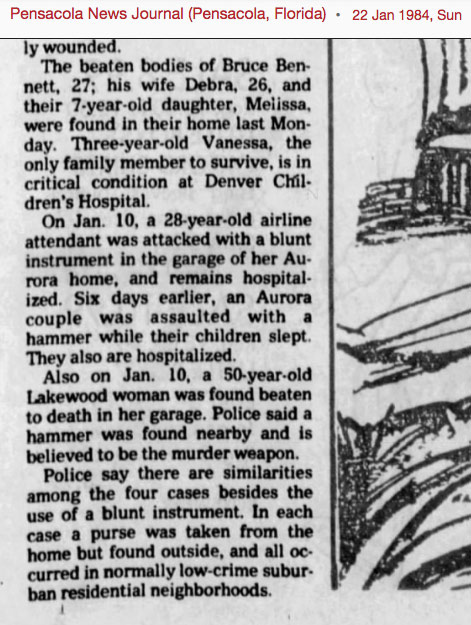
Attack 4
26 miles away from the Smith murder, but very close to the other incidents, the Bennett family was still settling into their new home on East Center Drive in Aurora, Colorado. They’d moved there around Thanksgiving from another place a few miles away, and had so far enjoyed their quiet, developing neighborhood. They lived on a peaceful cul-de-sac where most of the houses had recently been finished and were yet to be sold.
Bruce Alan Bennett was twenty-seven years old. He’d been in the Navy, where he worked on high-tech sonar equipment at Pearl Harbor. He was currently working at a family-owned furniture store, but was taking classes at the local college and would soon be working as an air traffic controller.
Debra Marie Bennett, twenty-six years old, had married Bruce before his Navy deployment in 1976. She too worked at the family-owned furniture store, and was happily helping raise the couple’s two children, Melissa (seven-years old, about to turn eight) and Vanessa (three years old), with the man that she loved.
On Sunday, January 15th, 1984, several family members gathered at the Bennett home to have a birthday part for Melissa, who would’ve turned eight on Tuesday. The last family member left around 9:00 PM. When they did, they noticed that the garage door was still open. Bruce had mentioned wanting to run to the store before bed.
This was the last time the Bennetts were seen alive.
Sometime between 9:00 PM on the 15th and 10:00 AM on the 16th (most likely between midnight and six), an intruder entered the Bennett home.
At some point, either when the intruder entered the couple’s bedroom or before, Bruce was alerted to the intruder’s presence and a tremendous struggle took place. Bruce and the intruder fought up and down the stairwell, and at some point Bruce was struck multiple times by a hammer. Even after he was struck and injured severely, Bruce continued to struggle valiantly with his attacker, and it seems he climbed the stairs after him even after the intruder thought that he was unconscious or dead. The attacker retrieved a butcher knife from the kitchen and began stabbing Bruce in various places on his upper body, and once Bruce was incapacitated again the offender used the knife to slit his throat from ear to ear. Bruce finally succumbed to his injuries and the family was left vulnerable.
It seems that Debra was the next victim, and she may have even been approached and incapacitated in the middle of Bruce’s struggle with the killer. There was evidence of a struggle in the bedroom. Debra was savagely beaten to death with a hammer. She was also raped.
Bruce and Debra were both probably dead by the time the killer entered Melissa’s bedroom. He viciously struck the young child in the head with a hammer. As blood poured out of her body, he lifted her up from the bed, unknowingly leaving an imprint from his shirt on her blood-soaked pajamas. He took her to the floor and sexually assaulted her. The child died from her injuries.
The youngest girl, Vanessa, only three years old until March, was also struck violently in the face with the hammer. The blow was so severe that her jaw was shattered and her skull was fractured in several places. The intruder, apparently thinking she was dead, began to make his escape.
He took Debra’s purse and went out the front door, then dumped the contents out onto the snow. He also discarded the knife he’d used to kill Bruce. He kept the hammer.
The Bennetts didn’t show up for work on Monday. A coworker informed Bruce’s mother, Constance, about their absence. Immediately she went over the home to investigate.
The garage door was still open. Constance entered the home, encountered the grisly scene, and immediately dialed the authorities.
The police swarmed through the residence, quickly assessing the condition of each family member as they cordoned off certain areas of the home to gather evidence. Unfortunately, they verified one by one that each family member was deceased. At least, until they came to Vanessa’s bed.
Wedged between the bed and the wall was three-year-old Vanessa, choking of fragments of her own jaw bone and barely clinging to life. She was quickly and carefully taken to the hospital in an ambulance. Constance, her grandmother, immediately set up a vigil (which she kept up for days) as the paramedics, nurses and doctors worked feverishly to save the girl’s life. After multiple surgeries, Vanessa was saved, though she went on the live with permanent physiological affects from the assault. She recently gave an interview, which you can view here (link).
The crimes appeared to be sexually motivated, judging by the assaults that occurred on Debra and Melissa. There wasn’t anything notable stolen from the scene, and the attack had all the hallmarks of a random crime.
There was no sign of forced entry. It was believed that the main garage door was left open throughout the night and that the door leading from the garage to the house was possibly left unlocked.
The backyard of the home was the only one in the area without a fence, and it backed up to a dark and lonely portion of Alameda Avenue. Other attacks had occurred off of this main road, and it’s believed that the killer could’ve entered the area from that point.
Police felt that the killer brought his own weapon to the scene — it didn’t appear that any of the tools or hammers at the home had been rifled through.
They immediately connected it with the Donna Dixon case from January 9th, and recognized that a serial offender was working the area. According to some sources, they were able to match a shoe print from the Bennett household to a shoe print found in the garage at the Donna Dixon assault.
Evidence and Developments
No immediate leads could be generated in the case. Forensics determined that the hammers used in each of the attacks were different, and that there didn’t appear to be anything terribly useful in the way of fingerprints or other evidence. Years later, strides would start to be made in the crime lab.
In 2002, Arapahoe County filed a “John Doe” arrest warrant for the perpetrator of the Bennet murders based on the DNA profile. Then in 2010, cold case investigators, who long theorized that the person who killed Patricia Smith in Lakewood was the same person who had committed the crimes in Aurora, compared the DNA from the Patricia Smith murder to the DNA found at the Bennett household. It was a match, proving that the same unknown offender had killed all four victims.
In 2015, information leaked that there was important clue found at the Bennett scene. Apparently when the killer lifted Melissa Bennett, an imprint from his shirt was made in the blood that had resulted from his assault on her.
Two different crime labs analyzed the fuzzy imprint, and they came up with different results. One lab felt that the letters were “RICHAR.” Another lab felt that it said “PETAW C,” with a space or fold between the “W” and the “C” and perhaps another fold in there as well.
This generated a buzz of discussion, with victims and family wondering why this information wasn’t released sooner, and online sleuths pouring over leads such as previous offenders named “Richard,” different water company uniforms looked at, and even eyes turned toward folks who were associated with a Canadian town/military base called Petawawa in Ontario.
Nothing concrete was ever developed.
Solved?
Detective Steve Conner has investigated this case for many years, taking over from an investigator named Marv Brandt. Both men were fiercely dedicated to seeing this case solved, and Conner started an effort to use every technology available to him to identify the offender. One of those techniques was an innovative imaging tool by Parabon Nanolabs which provides an approximation of what they offender might’ve looked like at both the time of the crimes and in the current day. He also inquired about searching various genealogical databases for a hit, but was advised at the time not to pursue that angle due to privacy issues.
As a workaround, a well-known forensic genealogist named Colleen Fitzpatrick analyzed the case, and her research came up with the possible surname of “Ewing.” This finding was announced an the television show, “On the Case With Paula Zahn,” in February 2018.
Upon the capture of a suspect in the Golden State Killer case, Conner again turned to genealogical databases. He used two methods, and announced a few weeks ago that he’d struck out with his first attempt. But what about his second? Or any of the other angles he was pursuing?
On August 7th, 2018, it was announced that there were significant new developments in the Smith/Bennett case, and that a news conference would be held at 10:00 AM on Friday, August 10th with more information.
At the press conference, they informed the public that when authorities in Nevada went back and retroactively began swabbing and entering their inmates’ DNA into CODIS, the Colorado Bureau of Investigation got a hit and that’s what’s led to the development in this case.



